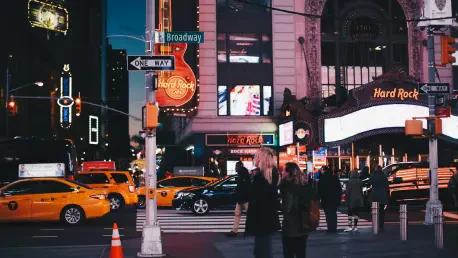Andrew Cuomo’s lack of a comprehensive transportation plan stands out in the current race for New York City mayor. As the frontrunner in polling, his campaign’s silence on crucial issues such as bus lanes, bike lanes, pedestrian infrastructure, and other urban transit matters is making waves among transportation advocates and policy analysts. Despite potentially overseeing key agencies such as the Department of Transportation and the NYPD, Cuomo has yet to articulate proposals that address these fundamental urban mobility concerns. This reticence is especially perplexing in a city that demands a sharp focus on transportation challenges due to its unique mix of density and reliance on public transit. Advocates are concerned that without clear plans or innovative solutions, New York City’s transportation infrastructure may continue to lag behind that of other global cities, which have embraced ambitious initiatives to improve urban mobility, pedestrian safety, and effective public transit systems.
Cuomo’s Limited Engagement with Transportation Issues
It is notable how Cuomo’s commitments to transportation seem sparse and insufficient compared to what many anticipate from a mayoral candidate. His previous discussions often hinge on modest expansions rather than transformative changes, as evidenced by vague promises about increased police presence in subways and tentative support for select transit fare initiatives. This leaves advocates questioning his dedication to enhancing mobility and safety in the city’s urban areas. Additionally, his campaign’s indication of reviewing car-free open streets on a “case-by-case basis” reflects an absence of concrete proposals that should address critical urban challenges decisively. By focusing on such limited initiatives, advocates contend that Cuomo neglects the comprehensive planning necessary to significantly improve the city’s transport network. Furthermore, his lack of engagement contrasts with the urgency shown by other candidates who prioritize mass transit reform and incorporate sustainable transportation solutions into their campaigns.
The Political Landscape and Transportation Reform
Cuomo’s checkered record while serving as governor adds a layer of complexity to his silence on transportation. His past emphasis on large-scale projects rather than improving subway services or urban cycling has created doubt about his potential leadership in city transit. Critics argue that Cuomo has not fulfilled promises related to urban transportation needs. Such inconsistency worries advocates about his leadership style, fearing stagnation rather than progressive transit policies if he is elected mayor. Notably, political allies like Rep. Adriano Espaillat may pose challenges. Their opposition to redesigns favoring transit access suggests alignment with Cuomo’s cautious approach, raising concerns about possible impacts on projects aimed at enhancing pedestrian and cyclist safety. The influential support he receives from certain community leaders adds pressure, which could translate into resistance to transit reforms perceived as beneficial for the broader public.
Contrasting Candidates in the Race
Where Cuomo’s plans appear sparse, other candidates have presented stronger engagement with transportation issues by proactively discussing their views with advocacy groups. Candidates like Scott Stringer and Zohran Mamdani, even without detailed transportation platforms, stand out for having communicated their positions on urban mobility, establishing more direct dialogues with experts. This level of engagement marks a distinct approach to transportation reform, differentiating their campaigns from Cuomo’s cautious style. StreetsPAC’s Eric McClure observes the striking absence of Cuomo’s engagement during the current campaign cycle, highlighting the missed opportunities compared to that of previous electoral seasons. In 2021, mayoral candidates often made transportation policy a centerpiece of their platform, demonstrating the depth of public demand for policy changes and infrastructure improvements in urban transport. This broader engagement indicates a desire for candidates who are prepared to tackle and resolve transportation issues through robust, inclusive discussions.
Future Considerations for Urban Transport Leadership
Cuomo’s approach to transportation seems lacking when scrutinized against the backdrop of expectations for mayoral candidates. His past discourse often revolves around minor upgrades rather than significant overhauls, illustrated by indistinct promises regarding boosting police presence in subways and half-hearted support for select fare initiatives. Such stances lead to doubts among advocates about his commitment to advancing mobility and safety in urban areas. Moreover, his campaign hints at assessing car-free streets on a “case-by-case basis,” which signals a lack of bold, tangible strategies to tackle critical urban issues head-on. Advocates argue this narrow scope overlooks the comprehensive planning required for considerable improvements in the city’s transport infrastructure. Furthermore, his passive engagement contrasts sharply with the proactive approach of other candidates who emphasize mass transit reform and integrate sustainable transportation solutions into their platforms, showcasing a genuine intention to modernize and revamp the city’s transportation ecosystem substantially.









